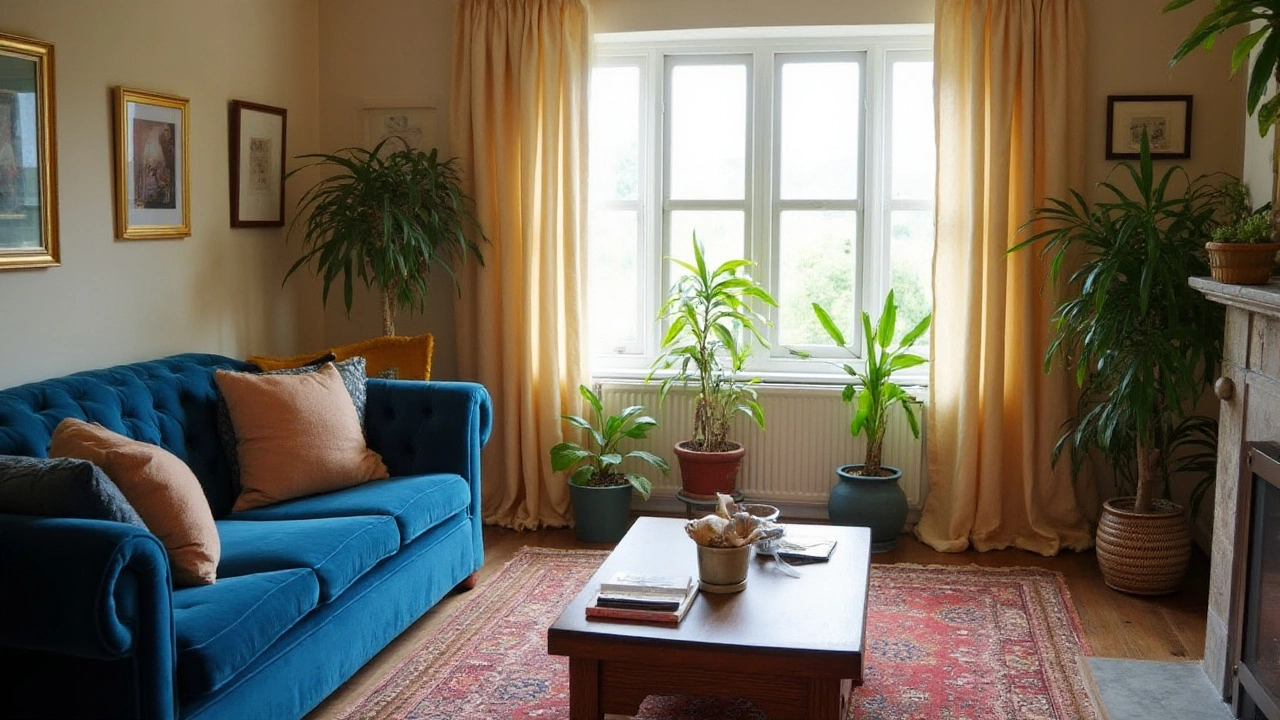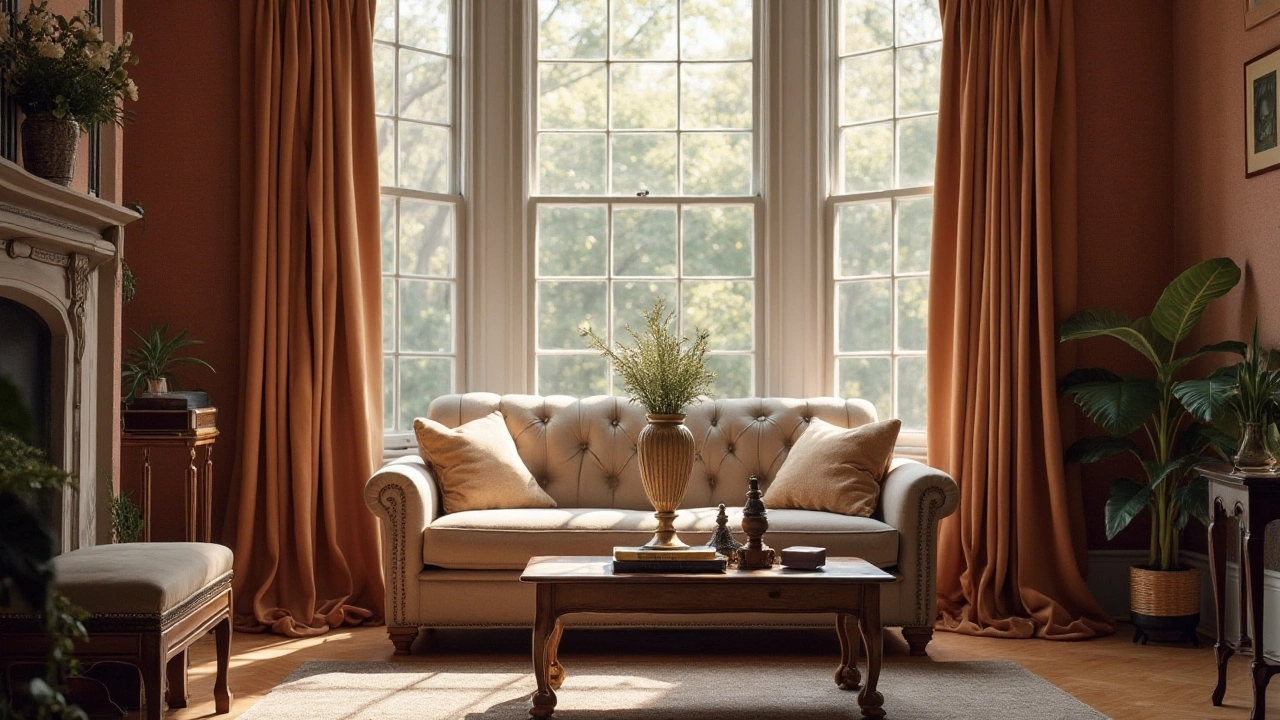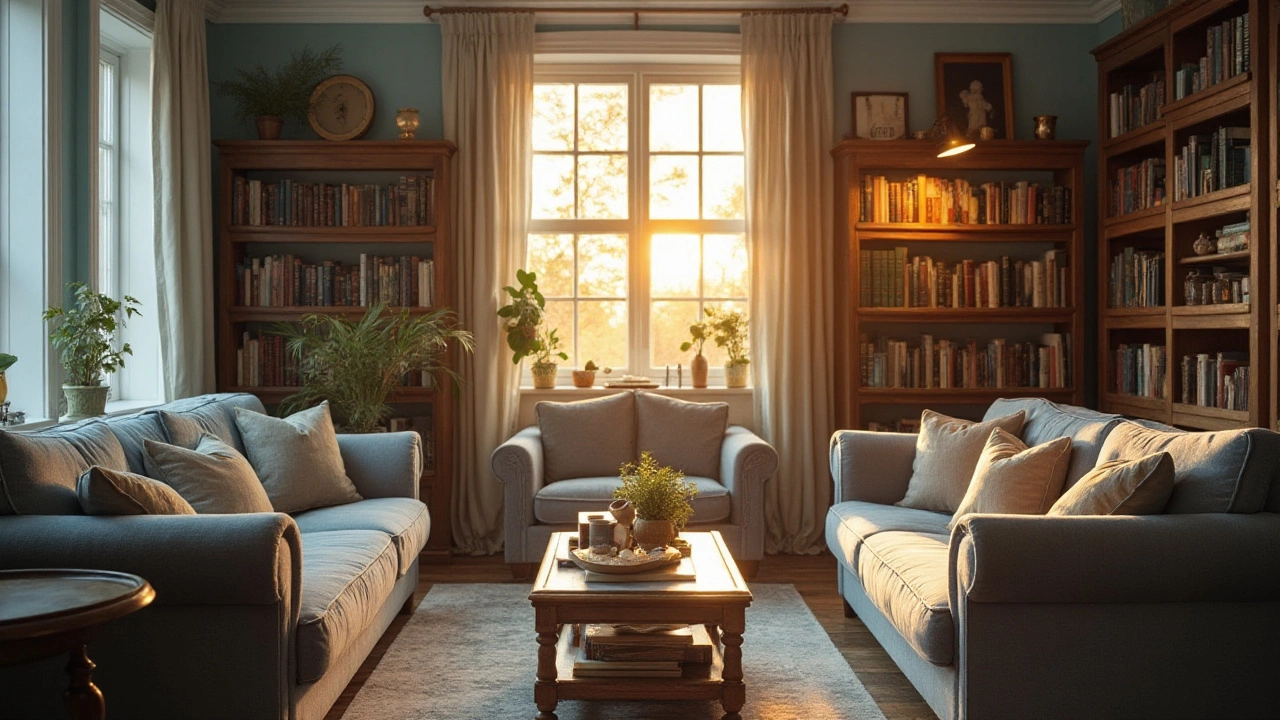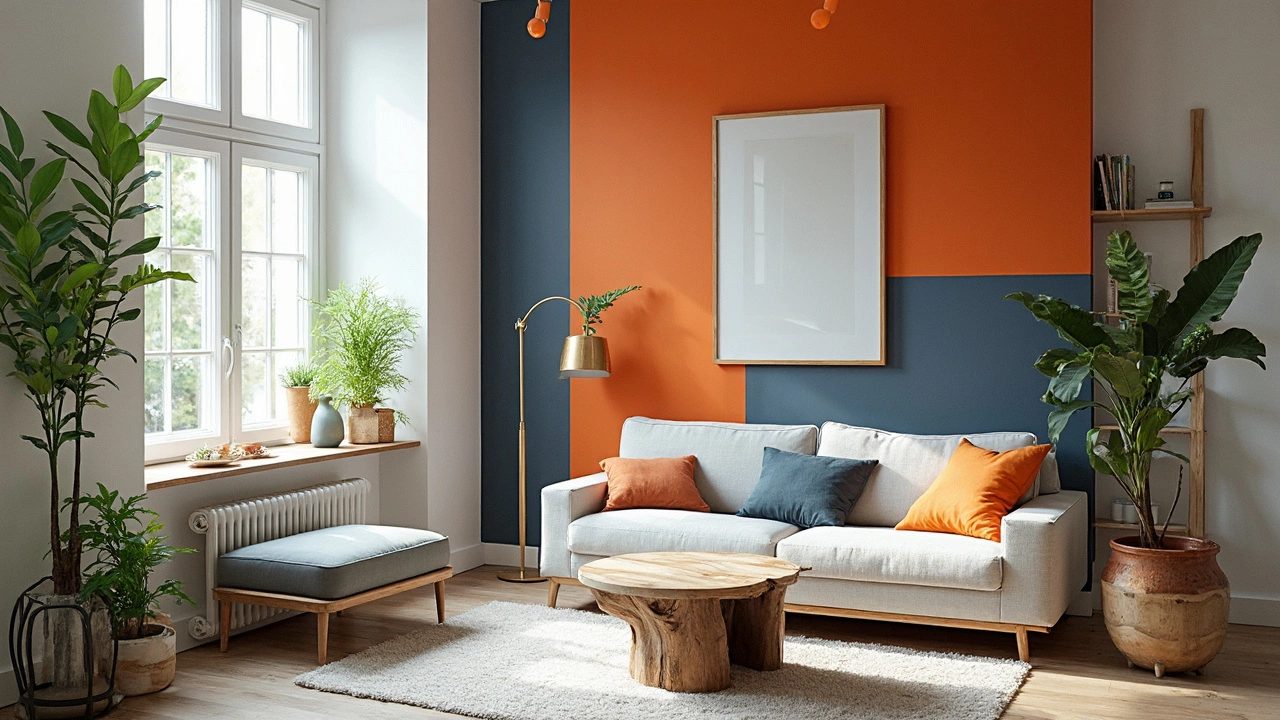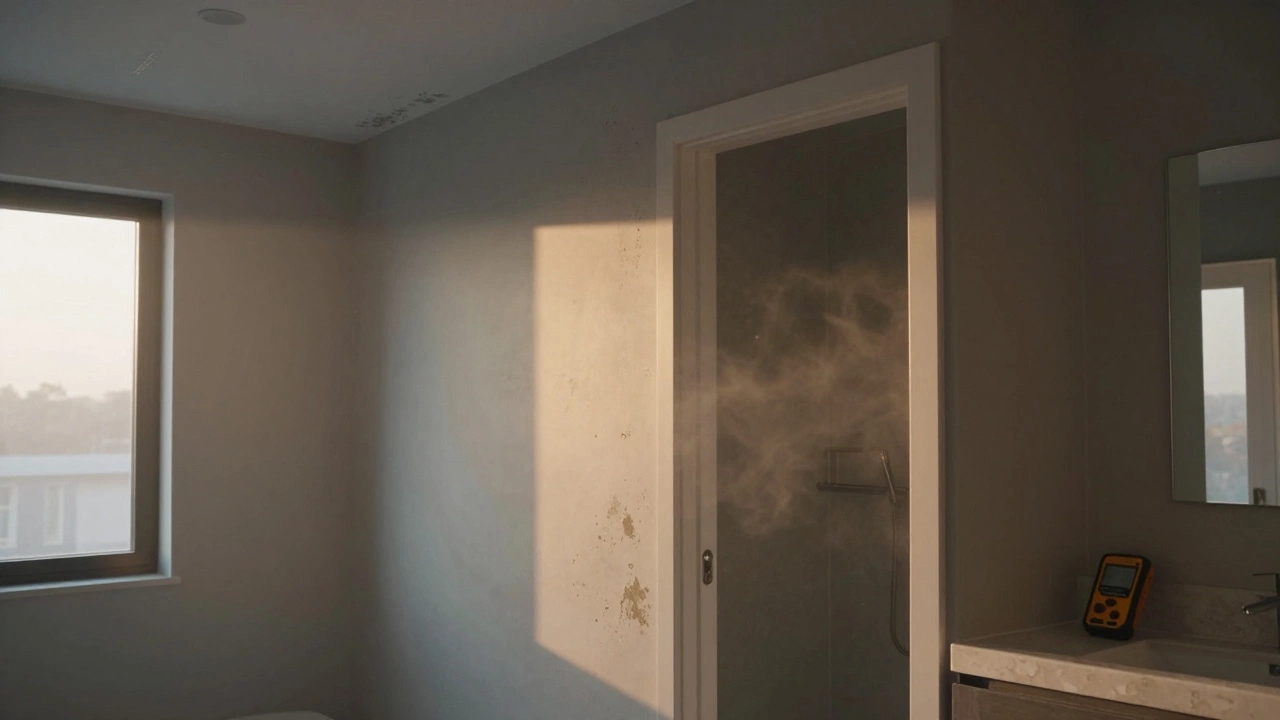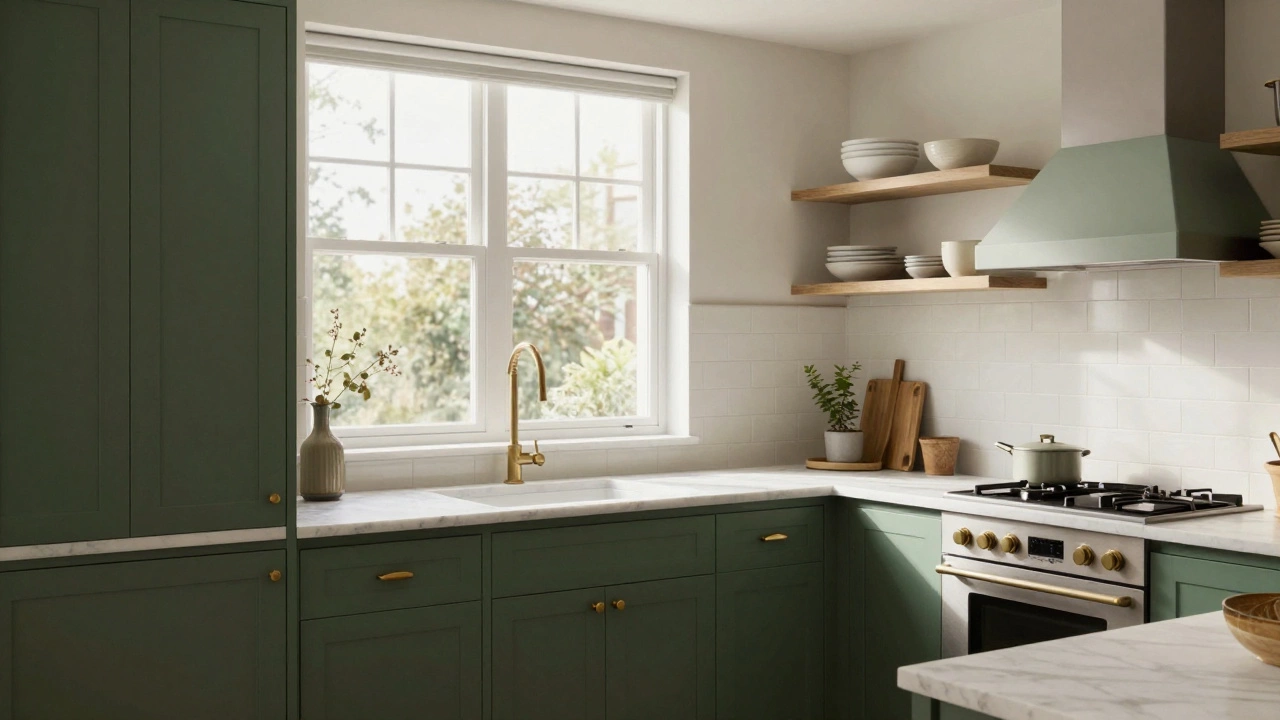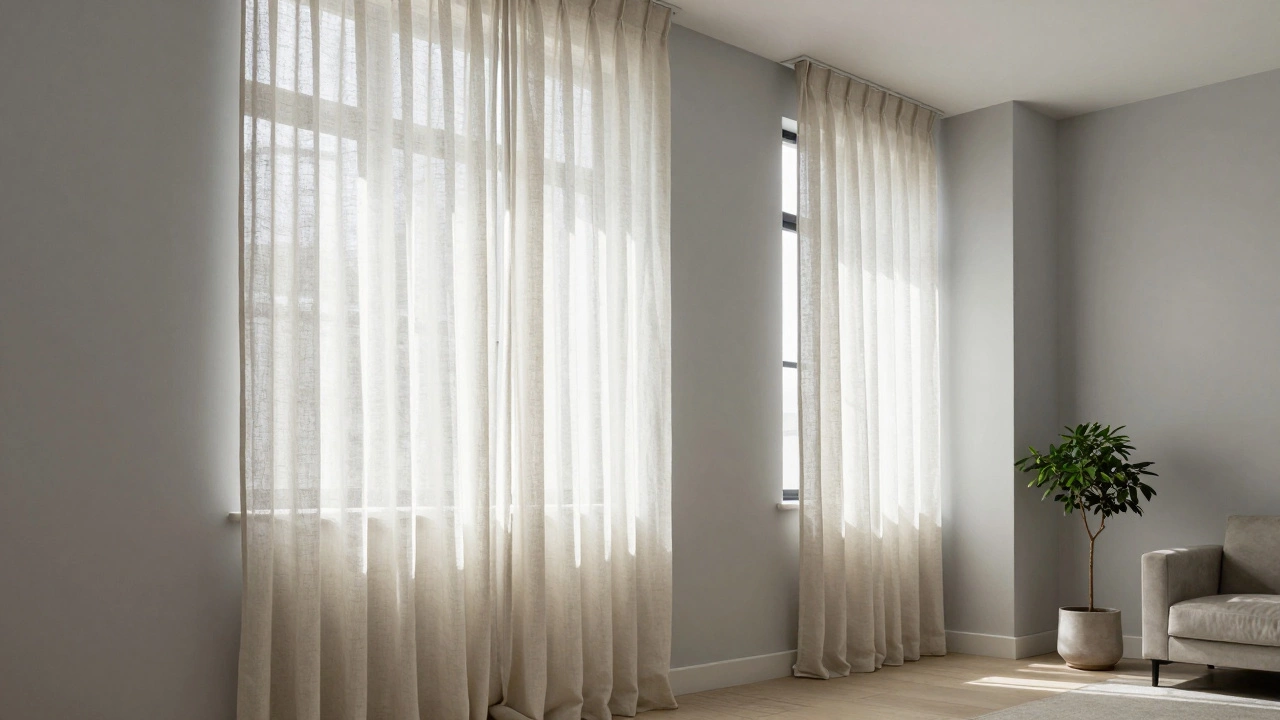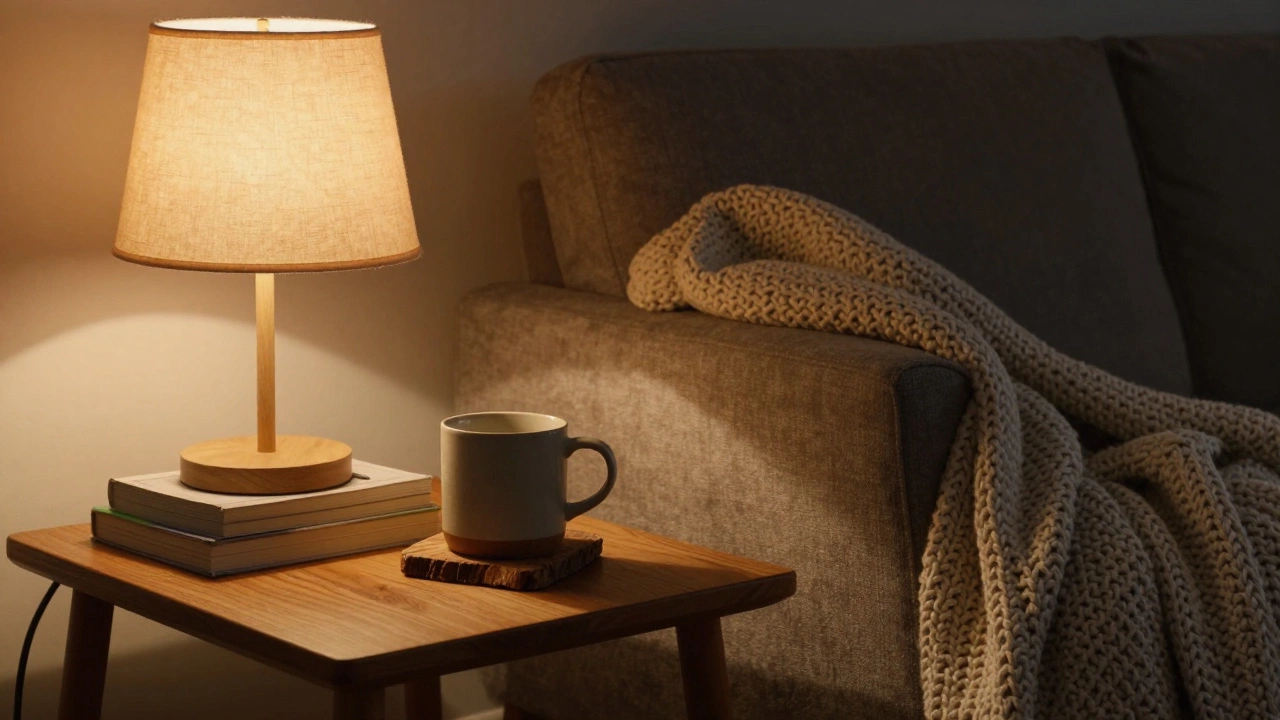Deciding whether your curtains should be lighter or darker than your couch is a common conundrum in home decorating. Each choice brings a distinct feel and style to your space, influencing not just the look but also the ambiance of the room.
Light curtains can open up a room, introducing a sense of airiness and space. They're particularly effective when paired with neutral or pastel couches, creating a soft, calming environment. On the other hand, darker curtains can provide a striking contrast, making for an elegant and sometimes dramatic effect. They work well with vibrant couch colors, adding depth and sophistication.
Beyond color, the material and pattern of the curtains play a crucial role. Heavier fabrics evoke warmth and coziness, while sheer curtains impart a fresh, breezy feel. Patterns can either enhance or clash, so choosing designs that complement your couch’s texture is essential.
In this exploration of curtain choices, we’ll traverse the shades and styles that best resonate with your existing décor, offering insights and inspirational ideas to transform your living space into a harmonious haven.
- The Role of Color in Interior Design
- Light Curtains: Creating Airy Spaces
- Darker Curtains: Adding Elegance and Contrast
- Considering Materials and Patterns
- Practical Tips for Curtain Selection
- Trends and Inspiring Ideas
The Role of Color in Interior Design
Color is much more than just a background detail in the grand scheme of interior design. It has the power to dramatically impact the way a space feels and functions, playing an integral role in expressing personality and setting a desired mood. When it comes to choosing colors for key elements like curtains and couches, understanding the basics of color theory can be incredibly beneficial. Colors are typically divided into warm and cool tones, each evoking distinct emotions and responses. Warm colors such as reds, oranges, and yellows can create a sense of warmth and coziness, often stimulating more lively interactions. Cool colors like blues, greens, and purples tend to have a calming and stabilizing effect, making them perfect for spaces meant for relaxation. An effective color scheme thoughtfully uses these elements to influence perception.
The psychological effects of color should also be considered. For instance, blue is known for its calming qualities, while red can increase energy levels and even influence appetite, which is why they are carefully chosen in spaces like kitchens or dining rooms. Colors can also make a room appear larger or smaller. Lighter colors give the illusion of more space and openness, often used in smaller rooms to prevent feelings of confinement. Darker shades can create a cozy, intimate atmosphere, suitable for larger spaces where creating a feeling of togetherness is key.
Cameron Chapman, a designer with an eye for color's interplay in home aesthetics, once noted, "Color is a power which directly influences the soul. It’s not just about picking something that looks good but finding a shade that also feels right."
Designers often employ a color wheel, a simple tool that simplifies the decision-making process. The wheel shows primary, secondary, and tertiary colors, which helps in crafting color schemes that either complement or contrast a home decor. Complementary colors are on opposite sides of the wheel and can make each other stand out, creating vibrant, eye-catching designs often used in modern interiors. Analogous colors sit next to each other and offer a subtler, more harmonious look, which might be preferable for traditional or tranquil spaces. Taking the time to consider these pairings when selecting colors for curtains alongside a couch can ensure the room not only looks cohesive but also feels balanced.
In terms of practical application, colors in a room often follow the 60-30-10 rule in interior design: 60% of the room should be a dominant color, like the walls, 30% a secondary color, which could be the color of the couch, and 10% an accent color like the curtains or decorative pieces. This proportionate approach aids in maintaining visual balance, ensuring neither the couch nor the curtains overpower the other. Patterns and prints on curtains or the couch can also introduce color nuances, creating depth and interest while aligning with the broader color strategy.
Finally, cultural significance and personal preference should be acknowledged. Colors can hold different meanings across various cultures and individual perspectives, often carrying various personal and emotional connotations. While universal rules and theories can offer guidance, personal instincts and experiences often lead to the most satisfying and unique design solutions. Ultimately, the goal is to meld personal style with design principles to craft spaces that are both visually appealing and functionally effective, where both lighter and darker curtains against couches play a harmonious role in this colorful dance.
Light Curtains: Creating Airy Spaces
When it comes to inviting light into your home, light curtains are like opening a window to new possibilities. They have this incredible ability to transform a room, bathing it in natural brightness and often making it feel larger than it actually is. There’s a psychological element here too - spaces filled with light tend to uplift moods, providing a serene environment that encourages tranquility and relaxation. This makes light curtains an excellent choice for spaces like living rooms or bedrooms where comfort is key. You’ll often find them in pastel shades or soft whites, which complement a wide range of home decor, acting as a neutral backdrop against which any additional textures or colors can stand out.
Opting for lighter fabrics such as cotton, linen, or even some synthetic blends ensures that your curtains hang gracefully, draping neatly without overwhelming the space. These materials also allow for a certain amount of diffusion, letting light filter through, but keeping the harsh excesses out of direct sight. In spaces where privacy isn't a huge concern, sheer curtains or those with a delicate weave can create a dreamy, almost ethereal effect, blurring the lines between the inside and outside world just enough to keep things interesting.
Interestingly, science backs the benefits of natural light, suggesting that maximizing sunlight exposure can enhance mood and improve productivity. The design aspect feeds into this by making spaces appear fresh and inviting. Not to mention, light curtains harmonize well with minimalism and Scandinavian design principles, both popular in contemporary interior styling. According to Architectural Digest, "light curtains paired with natural decor elements create a timeless aesthetic that blends seamlessly from season to season."
When considering curtain ideas, think about the direction your windows face. South-facing windows will receive direct sunlight for most of the day; hence, lighter curtains work wonderfully in such settings, reflecting light rather than absorbing it, which helps keep your space cooler during warmer months. Conversely, north-facing rooms benefit significantly from light curtains too, as they optimize whatever little natural light is available, giving the illusion of a sun-drenched setting.
Add into the mix the versatility of light curtains in terms of pairing them with various furniture styles. Whether you sport a modern aesthetic with angular couch choices or a more eclectic mix that demands a softening touch, light curtains fit seamlessly into any setup, enhancing and elevating the visual harmony of the space. Consider mixing textures; balancing a smooth silk couch with textured, breezy cotton curtains can create a pleasing contrast that adds layers to the room’s personality.
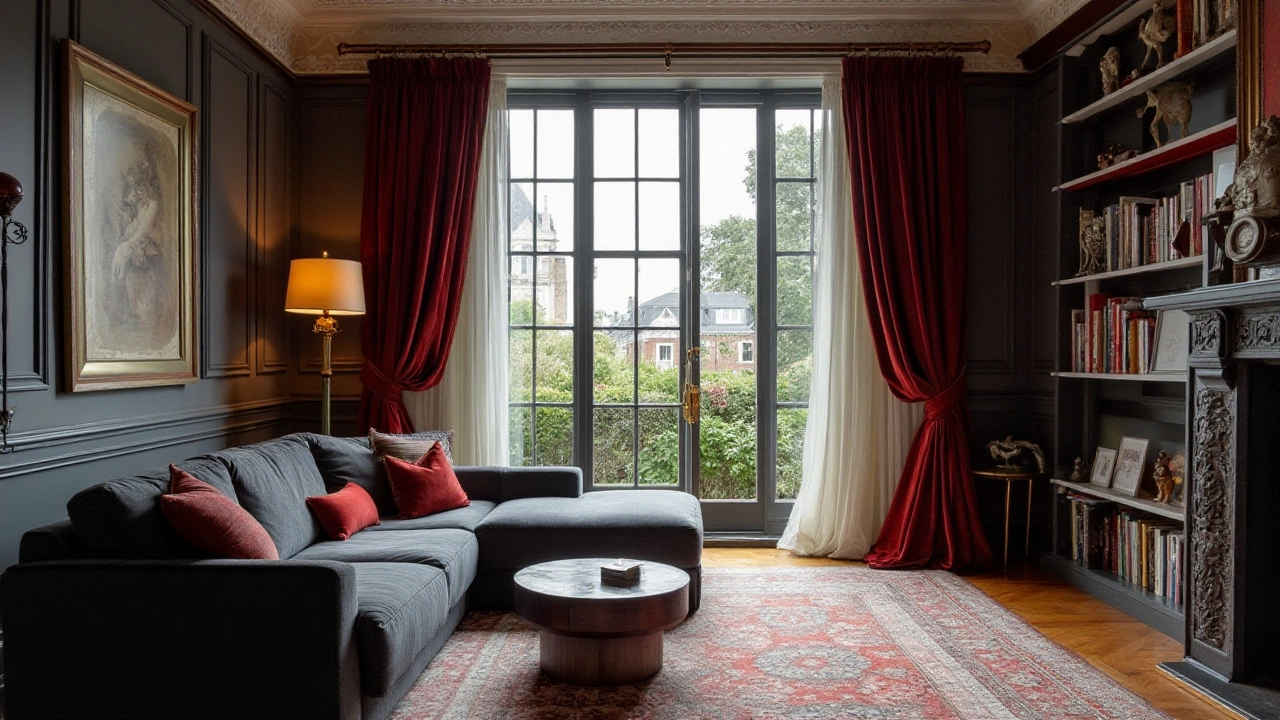
Darker Curtains: Adding Elegance and Contrast
When considering the impact of darker curtains in a room, it’s quite remarkable how these elements can transform a space. Bold, deep-hued curtains lend an air of sophistication and formality, enriching the atmosphere with a sense of elegance. They are particularly effective in rooms where creating a cozy, intimate environment is the goal. Think of spaces such as reading nooks or formal living areas where depth and focus are key. The rich tones of darker curtains can make a room feel more anchored and robust, providing a strong visual statement that can balance lighter elements in the room.
Darker shades like deep blues, charcoal, and even burgundy work well with varied couch colors. A neutral gray couch, for instance, can look especially striking against navy curtains. This combination adds depth without overwhelming the room with color. At the same time, darker curtains offer the practical benefit of light control, which is particularly valuable in rooms where reducing glare or blocking out light is necessary. This makes them an ideal choice for media rooms or bedrooms where darkness can improve both entertainment experience and sleep quality.
The interplay of textures adds another layer of complexity to consider. Velvet drapes in deep hues amplify the luxury and opulence factor, while simpler fabrics with subtle patterns can still maintain a sophisticated vibe without being overly ornate. It’s no wonder some interior design experts swear by darker curtains for their unmatched ability to unify a design concept. As interior designer Anne Hathaway once suggested, "When you want a room to reflect depth and drama without shouting, dark curtains are your best bet."
Perhaps less considered, but equally significant, is how darker curtains interact with ambient lighting. In areas where warm lighting is used, the curtains can take on a rich, inviting glow, enhancing the room's mood. This effect creates a cozy, intimate atmosphere during evenings, ideal for winding down and relaxing. Additionally, for those concerned with energy efficiency, darker curtains tend to be thicker, providing better insulation against temperature extremes, thus potentially lowering heating or cooling costs.
For those who worry about darker curtains making a room seem smaller, it's key to balance them with lighter furnishings or walls. This contrast prevents the space from feeling claustrophobic while still allowing darker curtains to stand out as the centerpiece of design. Pairing them with coordinating accessories, such as throw pillows or an area rug featuring similar dark tones, can reinforce the style without crowding the visual field.
Considering Materials and Patterns
When selecting curtains, it's not only the color that holds significance, but the fabric and pattern play a pivotal role in shaping the aesthetic of your space. Various materials can dramatically alter the feel of a room, influencing not only the light that enters but also how cozy or formal the environment appears. The interplay of materials such as velvet, cotton, silk, or linen with your couch establishes the mood and functionality of your space. For instance, heavier textiles like velvet add a sense of luxury and warmth, perfect for winter evenings, while light linens are ideal for letting in the summer breeze, creating an airy atmosphere around your couch.
Patterns introduce personality and interest, breaking the monotony of solid colors. They can echo the textures and colors found within the room to create a cohesive look. Stripes and geometrics might lend a modern edge that complements clean-lined, contemporary furniture pieces, while florals and damasks could enhance traditional interiors. When integrating patterns with your couch, considering scale is vital. A bold pattern on a curtain might overwhelm a delicate-patterned couch, leading to a visual clash that can be disorienting rather than harmonious.
Using these design elements effectively, you can achieve a balanced look. Fabrics that mimic your couch's upholstery create a seamless flow from one element to the next. Meanwhile, contrasting textures might offer a more dynamic interaction. This becomes particularly interesting when you involve mixed materials known for different characteristics. For instance, a leather couch might be paired with soft, billowy curtains for a unique juxtaposition that feels both inviting and stylish. Staying mindful of fabric maintenance is also crucial, as the ease of cleaning and durability should match your lifestyle needs.
"Choosing the right fabric is as much about its look as it is about its functionality. Consider how it will perform in your specific environment over time," suggests home stylist Amanda Wilson.
At times, selecting curtains can feel overwhelming given the abundance of choices. Yet, understanding how materials and patterns interact with other furnishings, like your couch, offers clarity. Designers often recommend using mood boards to visualize how these elements coexist. This approach enables you to ensure the home decor decisions you make bring joy and visual comfort to your space. Consider creating a sample swatch collection of your top material and pattern contenders, which allows you to confidently select the best match for your lifestyle and aesthetic preferences.
Practical insights also include checking how curtains look both in daylight and at night, making them a versatile design choice regardless of the time or lighting condition. Through these layered considerations, your interior will resonate harmoniously, embodying both individual taste and well-thought-out design principles. As you navigate through potential selections, remember that the goal is to complement without overshadowing, using materials and patterns to enhance the innate beauty and comfort of your home.
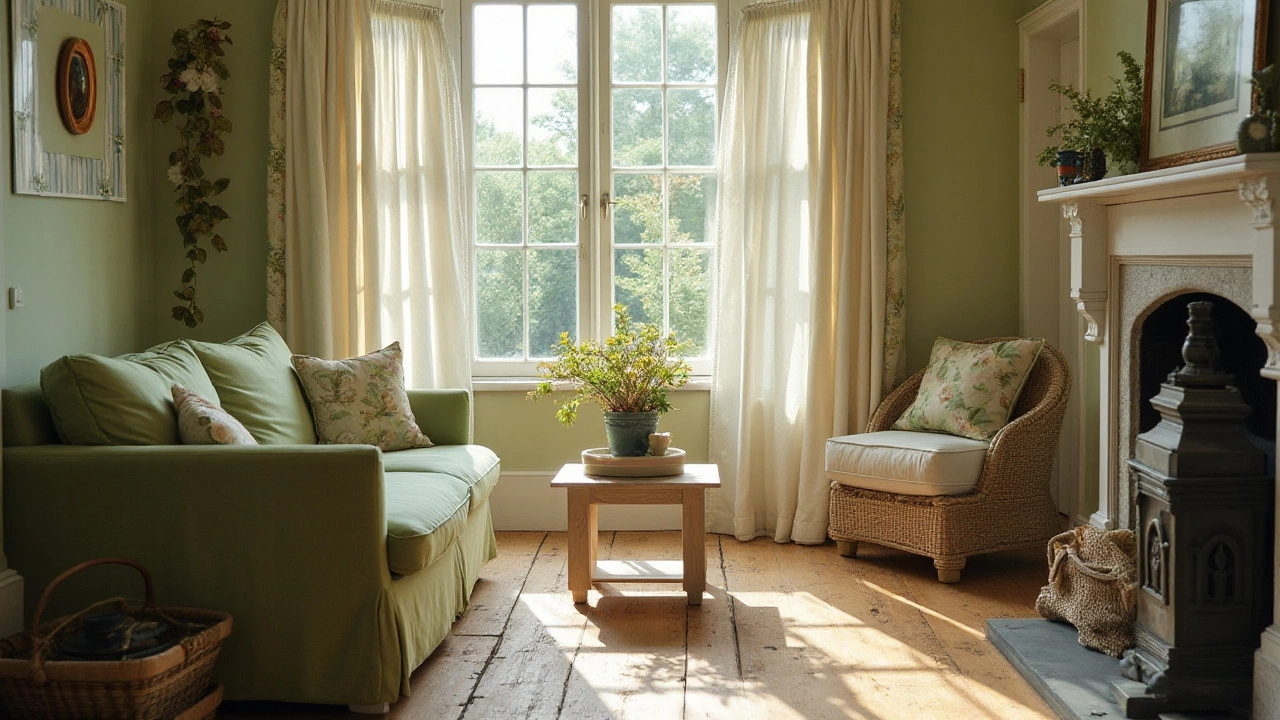
Practical Tips for Curtain Selection
Choosing the right curtains isn't just about finding something to cover your windows. It's about creating a space that reflects your personal style while enhancing the function and flow of your room. Start by considering the interior design style you aim to achieve. If your room is modern with a sleek, minimalistic design, opting for plain, light-colored curtains might be best. In contrast, if your decor leans towards traditional or eclectic, you might afford bolder and darker curtain choices.
Assess the color palette of the room. If your couch color is vibrant or patterned, offset it with neutral curtains to avoid overwhelming the space. Light-colored curtains tend to make a room feel larger and airy, which can be ideal for smaller spaces. In larger rooms, darker curtains can create a sense of coziness without making the room feel cramped. Considering the amount of natural daylight is crucial too; light curtains can brighten a space with less sunlight, while darker options can add depth and warmth to well-lit areas.
Fabric Choice
The material of your curtains can dramatically impact their appearance and function. Lightweight fabrics like cotton or linen allow more natural light to filter through, which can make them a great choice for communal areas like living rooms. Thicker materials such as velvet or heavy silks lend an opulent touch and are perfect for spaces needing more insulation or privacy, like bedrooms.
Don't forget about curtain ideas regarding texture. Textured curtains can add an interesting dimension to a space, even if they are neutral in color. This could be particularly effective if your couch is a smooth texture, playing with this contrast can elevate the decor.
Pattern Considerations
If you decide on patterned curtains, ensure that they complement rather than compete with your couch. Subtle patterns can add intrigue without overpowering your room. If your couch is plain, patterned curtains can create a focal point. Conversely, if your couch is already a statement piece, keep the curtains understated.
“Curtains are not just a simple home accessory; they are intimately connected with the rest of your home's decor scheme.” - Interior Designer, Jane Reardon
Practical Aspects
When selecting curtains, don’t overlook practicality. Think about cleaning and maintenance. Washable synthetic materials might be useful in homes with kids or pets. Also, consider the ease of opening and closing them. Will you be using them often, and do you need them to block out light completely?
Lastly, budget considerations should never be an afterthought. Set a budget that allows for creativity yet remains in line with your financial comfort zone. There are beautiful options available across all price ranges if you shop creatively, blending luxury with accessibility.
Trends and Inspiring Ideas
In today's ever-evolving world of home decor, the way we choose our curtains has undergone a significant transformation. It's not just about blocking out light or adding privacy anymore. Curtains have become a vital aspect of expressing personal style, aligning with the latest in interior design. One of the most talked-about trends is the rise of bold patterns and textures that demand attention. Designers are veering away from minimalism towards more eclectic and expressive styles. Curtains with large geometric prints or tropical motifs can serve as a focal point in any room, transforming a simple couch setup into a statement of creativity.
Interestingly, the use of environmentally friendly materials has gained momentum. Sustainability is not just a buzzword, but a lifestyle choice evident in curtain trends. Organic cotton, bamboo fibers, and recycled materials are increasingly popular, appealing to eco-conscious consumers who wish to reduce their carbon footprint without compromising on aesthetics. This move towards sustainability is reshaping the industry, as individuals and families make deliberate choices that align with their values.
Many interior magazines and style guides emphasize the return of vintage glam. Curtains that draw inspiration from past eras, be it the opulent velvet drapes of the 1920s or the chic, pastel hues reminiscent of mid-century modern styles, are making a comeback. Incorporating such pieces can add a touch of nostalgia, enriching homes with a unique blend of the classic and contemporary. As famed designer Jonathan Adler said,
"Your home should tell the story of who you are, and be a collection of what you love."
Color trends are also shifting. While neutral tones like beige and grey remain timeless, jewel tones are becoming incredibly popular. Rich colors such as emerald green, sapphire blue, and ruby red are being used to add a sophisticated burst of color that pairs exceptionally well with lighter couch fabrics. This not only creates a dramatic effect but also adds depth and warmth, making spaces feel inviting and cozy.
For those looking to bring an innovative touch to their living space, layering is a burgeoning trend. Pairing different textures and lengths of curtains can add a new dimension to a room. Imagine sheer curtains behind heavier drapes – not only does this add versatility in terms of light control, but it also provides a beautiful layered look. This technique allows easy adaptability, fitting into both casual or formal settings by merely adjusting the fabric layers.
Technological advancements are not left behind in curtain trends. The integration of smart curtain systems, operable through mobile apps or voice-controlled devices, offer both convenience and luxury. These systems are especially beneficial for high or hard-to-reach windows, allowing users to adjust light and privacy without the physical effort. The merging of tech with design signifies a shift towards a more connected home environment, where functionality meets style seamlessly.
The world of curtains is vibrant and filled with opportunities to express oneself. Whether it's through bold designs, sustainable choices, or smart technology, curtains offer endless possibilities to experiment and create spaces that truly resonate with one's personality and lifestyle. So when it comes to choosing between lighter or darker curtains for your couch, the possibilities are as wide as your imagination.

